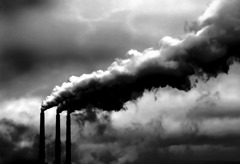Improvements in hygiene could partly explain increased rates of Alzheimer's disease seen in many developed countries, according to research into the link between infections and the condition. Researchers studied the prevalence of the neurodegenerative disease across 192 countries and compared it with the diversity of microbes in those places. Taking into account differences in birth rate, life expectancy, and age structure in their study, the scientists found that levels of sanitation, infectious disease, and urbanisation accounted for 33%, 36% and 28% respectively of the discrepancies seen in Alzheimer's rates between countries.  In their report which was published in the journal Evolution, Medicine and Public Health, the researchers concluded that hygiene was positively associated with risk of Alzheimer's disease. Countries with a greater degree of sanitation and lower prevalence of pathogens had a higher burden from the disorder. Countries with a greater degree of urbanisation and wealth also had higher Alzheimer's burdens. Whether hygiene causes the pattern is not yet clear – cleanliness or infectious disease might be associated with some other factor – but the team does have a speculative hypothesis for how the two factors might be linked: exposure to micro-organisms – good and bad – is important for the body to develop proper immune responses. The researchers' "hygiene hypothesis" suggests that as societies have become cleaner, the reduced level of contact with bacteria and other kinds of infectious agent might stall the proper development of important elements of the body's immune system such as white blood cells. The team suggests that developing Alzheimer's might be linked to autoimmune disease, in which the body's immune system attacks itself.
In their report which was published in the journal Evolution, Medicine and Public Health, the researchers concluded that hygiene was positively associated with risk of Alzheimer's disease. Countries with a greater degree of sanitation and lower prevalence of pathogens had a higher burden from the disorder. Countries with a greater degree of urbanisation and wealth also had higher Alzheimer's burdens. Whether hygiene causes the pattern is not yet clear – cleanliness or infectious disease might be associated with some other factor – but the team does have a speculative hypothesis for how the two factors might be linked: exposure to micro-organisms – good and bad – is important for the body to develop proper immune responses. The researchers' "hygiene hypothesis" suggests that as societies have become cleaner, the reduced level of contact with bacteria and other kinds of infectious agent might stall the proper development of important elements of the body's immune system such as white blood cells. The team suggests that developing Alzheimer's might be linked to autoimmune disease, in which the body's immune system attacks itself.
August 14, 2013
August 2, 2013
Shifts in climate change are strongly linked to human violence around the world, according to a comprehensive new study released Thursday by the University of California, Berkeley and Princeton University. The research, which was published in Science, examined 60 previous studies from all major regions of the globe. The results suggest that changes such as drought, flood, and high temperatures strongly correlate with spikes in conflict. Researchers noted examples including increased domestic violence in India and Australia, assaults and murders in the United States and Tanzania, ethnic violence in Europe and South Asia, land invasions in Brazil, police violence in the Netherlands, and civil conflicts throughout the tropics. The biggest culprit: higher temperatures. Out of 27 modern societies studied, all 27 showed a positive relationship between higher temperatures and violence. One standard deviation shift towards hotter conditions causes the likelihood of personal violence to rise four percent and intergroup conflict to rise 14 percent. If the study's calculations are correct, a global temperature rise of just 2 degrees Celsius could increase intergroup conflicts (such as civil wars) by over 50 percent. And, as Climate Central notes, projections estimate that temperatures will make that jump by 2040.
July 31, 2013
An excerpt from a story at The Atlantic Wire: "...In other words, a warmer atmosphere from climate change likely yields greater extremes in weather. 
July 22, 2013
How terrible for a person to know what he could have been. How he could have gone on. But instead having to live along being nothing, and know he is just going to die and that is the end of it.
Oakley Hall Warlock
July 20, 2013
On this date, July 20, in 1969, astronaut Neil Armstrong became the first human to walk on the moon. I was in Finland. The next day, walking around Helsinki, 
June 20, 2013
Analysis of the earnings of the top 200 chief executives at public companies with at least $1 billion in revenue indicates another big raise last year. The research, conducted by Equilar Inc., the executive compensation analysis firm,  found that the median 2012 pay package came in at $15.1 million — a leap of 16 percent over 2011. As usual, cash pay pales next to the value of the stock and option grants they received. Median cash compensation was $5.3 million last year, while stock and option grants came in at $9 million. Stock grants are clearly where the action is, and their value can really add up. Equilar’s analysis calculates the median value of stock holdings of these C.E.O.’s at $51 million. That’s a median of $66.1 million dollars per year. Median. And you thought baseball players were overpaid.
found that the median 2012 pay package came in at $15.1 million — a leap of 16 percent over 2011. As usual, cash pay pales next to the value of the stock and option grants they received. Median cash compensation was $5.3 million last year, while stock and option grants came in at $9 million. Stock grants are clearly where the action is, and their value can really add up. Equilar’s analysis calculates the median value of stock holdings of these C.E.O.’s at $51 million. That’s a median of $66.1 million dollars per year. Median. And you thought baseball players were overpaid.
May 11, 2013
Worldwide levels of the chief greenhouse gas that causes global warming have hit a milestone, reaching an amount never before encountered by humans. Carbon dioxide was measured at 400 parts per million at the oldest monitoring station in Hawaii which sets the global benchmark. According to the National Oceanic and Atmospheric Administration, the last time the worldwide carbon level was probably that high was about 2 million years ago. That was during the Pleistocene Era. Other scientists say it may have been 10 million years ago that Earth last encountered this much carbon dioxide in the atmosphere.  The first modern humans only appeared in Africa about 200,000 years ago. The measurement that was recorded is only a daily figure, the monthly and yearly average will be smaller. The number 400 has been anticipated by climate scientists and environmental activists for years as a notable indicator, in part because it's a round number — not because any changes in man-made global warming happen by reaching it. Physically, we are no worse off at 400 ppm than we were at 399 ppm. But as a symbol of the painfully slow pace of measures to avoid a dangerous level of warming, it's somewhat unnerving. "This number is a reminder that for the last 150 years — and especially over the last several decades — we have been recklessly polluting the protective sheath of atmosphere that surrounds the Earth and protects the conditions that have fostered the flourishing of our civilization. We are altering the composition of our atmosphere at an unprecedented rate", said Al Gore. Carbon dioxide traps heat just like in a greenhouse and most of it stays in the air for a century; some lasts for thousands of years. It accounts for three-quarters of the planet's heat-trapping gases. There are others, such as methane, which has a shorter life span but traps heat more effectively. Methane concentrations also are rising because of human activity such as industrial farming.
The first modern humans only appeared in Africa about 200,000 years ago. The measurement that was recorded is only a daily figure, the monthly and yearly average will be smaller. The number 400 has been anticipated by climate scientists and environmental activists for years as a notable indicator, in part because it's a round number — not because any changes in man-made global warming happen by reaching it. Physically, we are no worse off at 400 ppm than we were at 399 ppm. But as a symbol of the painfully slow pace of measures to avoid a dangerous level of warming, it's somewhat unnerving. "This number is a reminder that for the last 150 years — and especially over the last several decades — we have been recklessly polluting the protective sheath of atmosphere that surrounds the Earth and protects the conditions that have fostered the flourishing of our civilization. We are altering the composition of our atmosphere at an unprecedented rate", said Al Gore. Carbon dioxide traps heat just like in a greenhouse and most of it stays in the air for a century; some lasts for thousands of years. It accounts for three-quarters of the planet's heat-trapping gases. There are others, such as methane, which has a shorter life span but traps heat more effectively. Methane concentrations also are rising because of human activity such as industrial farming. 
April 8, 2013
A new Gallup survey indicates people feel safer in the Twin Cities than any other major metro area in the country. Of the Minneapolis-St. Paul residents, 80 percent said they feel safe walking around at night. 
February 8, 2013
Central Connecticut State University just announced this year's most literate U.S. cities.  The annual study is conducted by the University's president, John Miller, who ranks the 75 largest U.S. cities based on various information, such as library resources, Internet resources, the number of bookstores, periodical publishing resources, newspaper circulation, and education levels. The "Internet resources" category also includes visiting a newspaper website, buying books online, and/or owning an e-reader. Miller indicated that the study's aim is to shift attention from school test scores on reading "to how much people are reading, and where are they reading the most." Washington DC came in first place for the third year in a row. Proud to say my city came in third! These are the top 25 most literate U.S. cities for 2012, according to this study:
The annual study is conducted by the University's president, John Miller, who ranks the 75 largest U.S. cities based on various information, such as library resources, Internet resources, the number of bookstores, periodical publishing resources, newspaper circulation, and education levels. The "Internet resources" category also includes visiting a newspaper website, buying books online, and/or owning an e-reader. Miller indicated that the study's aim is to shift attention from school test scores on reading "to how much people are reading, and where are they reading the most." Washington DC came in first place for the third year in a row. Proud to say my city came in third! These are the top 25 most literate U.S. cities for 2012, according to this study:
1. Washington, DC
2. Seattle, WA
3. Minneapolis, MN
4. Pittsburgh, PA
5. Denver, CO
6. St. Paul, MN
7. Boston, MA
8. Atlanta, GA
9. St. Louis, MO
10. Portland, OR
11. San Francisco, CA
12. Cincinnati, OH
13. Kansas City, MO
14. Cleveland, OH
15. Honolulu CDP, HI
16. Oakland, CA
17. Virginia Beach, VA
18. Raleigh, NC
19. Baltimore, MD
20. Tampa, FL
21. New York City, NY
22. Tulsa, OK
23. Austin, TX
24. Lexington-Fayette, KY
25. New Orleans, LA

